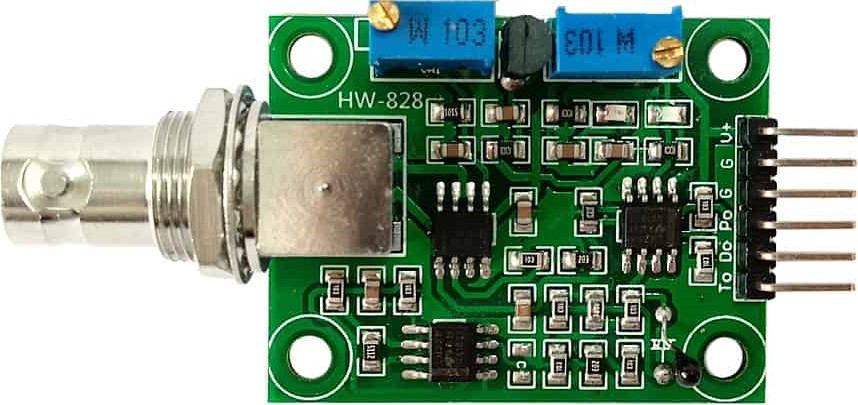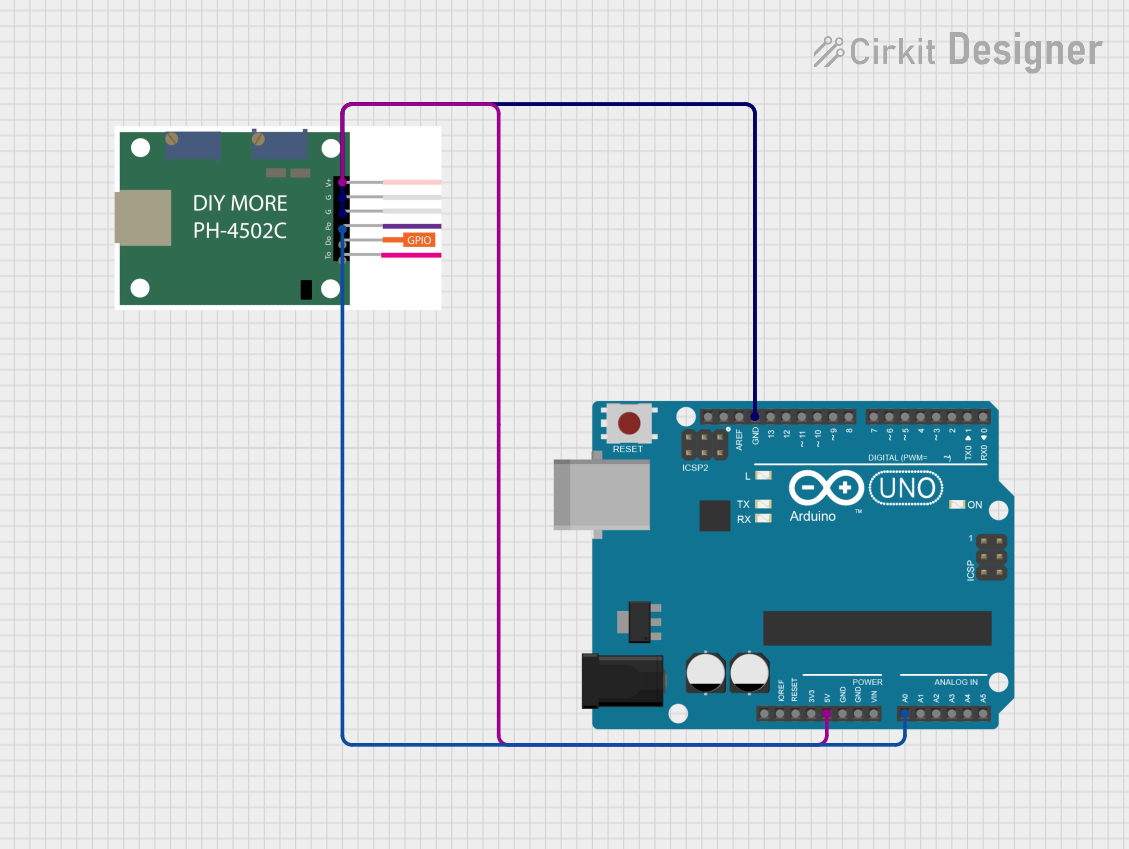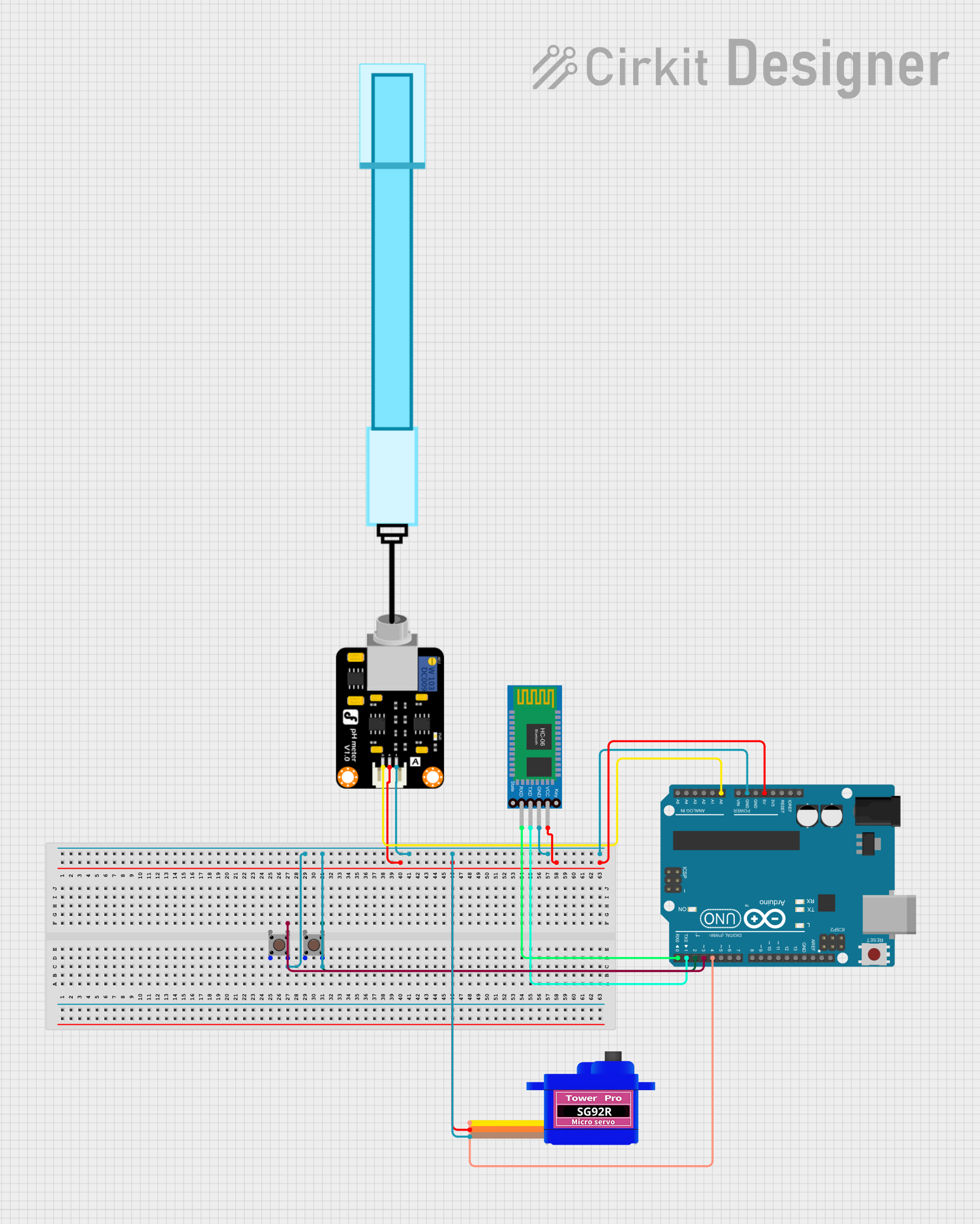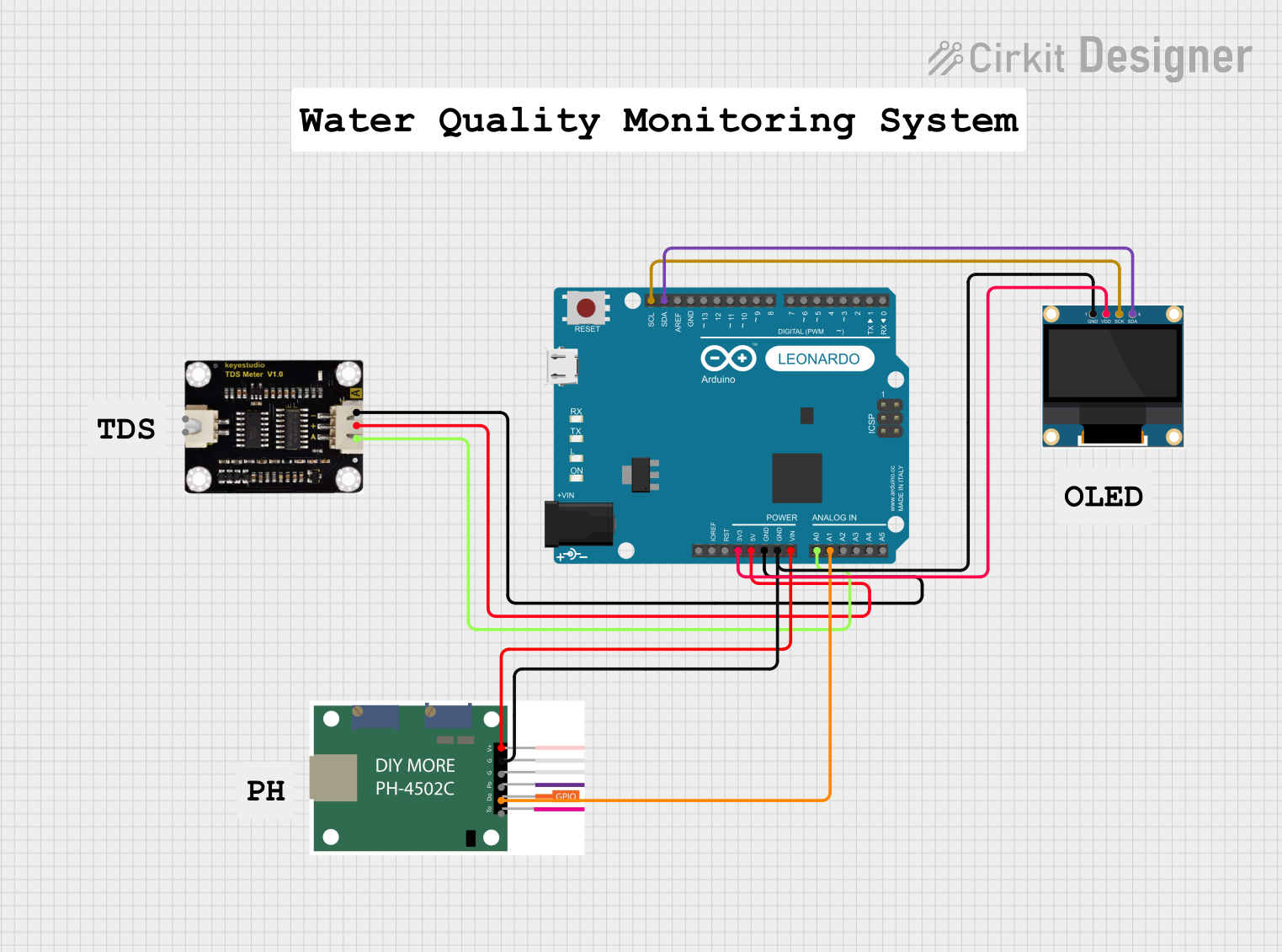
How to Use PH-4502c: Examples, Pinouts, and Specs

 Design with PH-4502c in Cirkit Designer
Design with PH-4502c in Cirkit DesignerIntroduction
The PH-4502c is a high-performance, low-noise operational amplifier developed by Arduino. It is designed for precision signal processing applications, offering a wide bandwidth and low distortion. These features make it an excellent choice for audio systems, instrumentation circuits, and other applications requiring accurate signal amplification and processing.
Explore Projects Built with PH-4502c

 Open Project in Cirkit Designer
Open Project in Cirkit Designer
 Open Project in Cirkit Designer
Open Project in Cirkit Designer
 Open Project in Cirkit Designer
Open Project in Cirkit Designer
 Open Project in Cirkit Designer
Open Project in Cirkit DesignerExplore Projects Built with PH-4502c

 Open Project in Cirkit Designer
Open Project in Cirkit Designer
 Open Project in Cirkit Designer
Open Project in Cirkit Designer
 Open Project in Cirkit Designer
Open Project in Cirkit Designer
 Open Project in Cirkit Designer
Open Project in Cirkit DesignerCommon Applications and Use Cases
- Audio signal amplification and processing
- Instrumentation and measurement systems
- Active filters and oscillators
- Precision voltage followers
- Analog computing circuits
Technical Specifications
The PH-4502c operational amplifier is engineered for high precision and reliability. Below are its key technical specifications:
| Parameter | Value |
|---|---|
| Supply Voltage (Vcc) | ±3V to ±18V |
| Input Offset Voltage | ≤ 1 mV |
| Input Bias Current | ≤ 50 nA |
| Gain Bandwidth Product | 10 MHz |
| Slew Rate | 0.5 V/µs |
| Input Impedance | ≥ 10 MΩ |
| Output Impedance | ≤ 100 Ω |
| Operating Temperature | -40°C to +85°C |
| Package Type | DIP-8 or SOIC-8 |
Pin Configuration and Descriptions
The PH-4502c is typically available in an 8-pin Dual Inline Package (DIP-8) or Small Outline Integrated Circuit (SOIC-8). Below is the pinout and description:
| Pin Number | Pin Name | Description |
|---|---|---|
| 1 | Offset Null | Used for offset voltage adjustment (optional) |
| 2 | Inverting Input | Inverting input terminal (-) |
| 3 | Non-Inverting Input | Non-inverting input terminal (+) |
| 4 | V- (Negative Supply) | Negative power supply terminal |
| 5 | Offset Null | Used for offset voltage adjustment (optional) |
| 6 | Output | Amplifier output terminal |
| 7 | V+ (Positive Supply) | Positive power supply terminal |
| 8 | NC (No Connection) | No internal connection (leave unconnected) |
Usage Instructions
The PH-4502c operational amplifier is versatile and can be used in a variety of circuit configurations. Below are general guidelines for using the component effectively:
How to Use the PH-4502c in a Circuit
- Power Supply: Connect the V+ pin (Pin 7) to the positive supply voltage and the V- pin (Pin 4) to the negative supply voltage. Ensure the supply voltage is within the specified range (±3V to ±18V).
- Input Connections:
- Connect the signal to be amplified to the inverting (Pin 2) or non-inverting input (Pin 3), depending on the desired configuration.
- Use appropriate resistors and capacitors to set the gain and bandwidth of the amplifier.
- Output Connection: The amplified signal will be available at the output pin (Pin 6). Connect this pin to the next stage of your circuit.
- Offset Adjustment (Optional): If precise offset voltage adjustment is required, connect a 10 kΩ potentiometer between the Offset Null pins (Pins 1 and 5) and the wiper to V+.
Important Considerations and Best Practices
- Decoupling Capacitors: Place decoupling capacitors (e.g., 0.1 µF ceramic and 10 µF electrolytic) close to the power supply pins to reduce noise and improve stability.
- Input Impedance: Ensure the input impedance of the circuit is high enough to avoid loading the signal source.
- Thermal Management: Operate the amplifier within the specified temperature range (-40°C to +85°C) to prevent thermal damage.
- Avoid Oscillations: Use proper feedback network design to prevent unwanted oscillations in the circuit.
Example: Connecting the PH-4502c to an Arduino UNO
The PH-4502c can be used with an Arduino UNO for signal amplification. Below is an example of a simple non-inverting amplifier circuit:
Circuit Description
- The PH-4502c amplifies an analog signal, which is then read by the Arduino UNO's analog input pin.
Arduino Code
// Example code for reading an amplified signal using Arduino UNO
// The amplified signal is connected to analog pin A0
const int analogPin = A0; // Define the analog input pin
int signalValue = 0; // Variable to store the analog signal value
void setup() {
Serial.begin(9600); // Initialize serial communication at 9600 baud
}
void loop() {
signalValue = analogRead(analogPin); // Read the amplified signal
Serial.print("Signal Value: "); // Print the signal value to the Serial Monitor
Serial.println(signalValue);
delay(500); // Wait for 500 ms before the next reading
}
Troubleshooting and FAQs
Common Issues and Solutions
No Output Signal:
- Cause: Incorrect power supply connections.
- Solution: Verify that the V+ and V- pins are connected to the correct supply voltages.
Distorted Output:
- Cause: Exceeding the input voltage range or improper feedback network design.
- Solution: Ensure the input signal is within the specified range and check the feedback resistor values.
Oscillations or Noise:
- Cause: Insufficient decoupling or poor PCB layout.
- Solution: Add decoupling capacitors near the power supply pins and use a proper ground plane.
High Offset Voltage:
- Cause: Offset voltage not adjusted.
- Solution: Use a potentiometer to adjust the offset voltage via the Offset Null pins.
FAQs
Q1: Can the PH-4502c be used for single-supply operation?
A1: Yes, the PH-4502c can operate with a single supply voltage. Connect the V- pin to ground and ensure the input signal is biased within the amplifier's input range.
Q2: What is the maximum gain achievable with the PH-4502c?
A2: The maximum gain depends on the feedback network design. However, for stable operation, it is recommended to keep the gain below 1000.
Q3: Can I use the PH-4502c for audio applications?
A3: Yes, the PH-4502c is well-suited for audio applications due to its low noise and wide bandwidth.
Q4: How do I protect the amplifier from damage?
A4: Use clamping diodes at the input to protect against voltage spikes and ensure the supply voltage does not exceed the specified range.